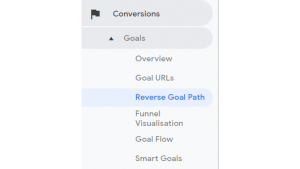
E-commerce sites require a lot more ongoing monitoring and administrative tasks than informational sites. Once you have a new WooCommerce e-commerce site built for your business, you now need to manage it.
The website team who built your WooCommerce e-commerce site may be available for support and edits, but your business will also need to handle some of the day-to-day management of the site.
Effectively managing a WooCommerce site can entail a lot of different tasks, but the following are 5 areas to focus on:
1. Product Inventory & Changes
Managing the actual products on your WooCommerce site is an important task. You’ll typically add all of the products and set up the inventory management when building or redesigning a new e-commerce site.
After launching and receiving training from your website team, it can be helpful to identify one person on your team as the website administrator who will oversee things like product changes and inventory.
With WooCommerce, there are a couple of options for setting up inventory management. Depending on your product, you’ll typically select the setting in WooCommerce to enable stock management at the product level and input the available inventory quantity.
If you are using an internal system though for inventory management, you’ll definitely need to monitor both or integrate the system with the site. Inventory management is one of the most important pieces because customers will get frustrated if they are trying to check out and realize that something is unavailable or out of stock.
Another administrative task is overseeing changes to the products. Your products may change overtime. Adjusting product images and updating them to high-quality images is another task. Customers have high expectations when shopping online and expect the product image and description to be accurate for what they are shopping for.
Lastly, managing products also includes launching discounts or coupons for products and adjusting these with marketing campaigns.
2. Customer Support
Customer support is an often forgotten part of an e-commerce site, but it’s really important and your team will need to have customer support people or a site admin may need to be ready to handle incoming questions by phone, live chat if applicable or email.
It’s great when setting up an e-commerce site to offer a resource area and FAQ section where you can answer common questions on how users can reset their password, request a refund or ask questions about a product. Live chat can also be a great tool if your team is able to manage it, and it can boost sales as customers may have questions during the checkout process.
If you have an e-commerce site, you’ll often have a website team who is providing support, but they are more available to handle advanced issues. The site admin though needs to be available to answer basic customer questions.
Providing high-quality customer support can be a pain point for large scale e-commerce sites with high traffic and lots of sales or if you have a complex e-commerce site with subscription or membership plans. In those cases, you may look at outsourcing support for phone and email so customers are getting responses as soon as possible.
3. Shipping & Integrations
If you are selling a physical product as opposed to a download or digital item, shipping will be another element that you need to manage.
With WooCommerce, there are lots of different shipping options available and shipping extensions. You can offer free shipping to customers, a flat rate, or table rate shipping based on FedEx or UPS rates. You’ll typically select the shipping options when building the site.
Make sure to monitor the shipping set up and how the shipping costs are calculated. Sometimes the product weight may not have been evaluated properly and you can end up with a high shipping cost that may deter a customer from even purchasing the product. Or, if you are offering free shipping, your team could end up absorbing that if you have a high shipping cost. If you notice discrepancies, you can then work with the shipping carrier and development team to adjust the product calculations.
In addition to shipping, you’ll often have other systems connected with the WooCommerce site, such an integration with your email marketing platform or CRM. It’s important to have someone on your team watching all of these things.
Once they are set up by the web design team, these integrations should run smoothly, but things can always change with plugin updates, the WooCommerce core, and third-party APIs.
4. Plugin Updates & Security
WooCommerce sites require ongoing plugin updates and maintenance in the backend. WordPress and WooCommerce run on plugins for functionality. Similar to software apps, you need to keep all of these updated or the site will start running into issues with security and performance.
Security is also more critical for WooCommerce e-commerce sites. As an e-commerce business, you are more liable for the website security because customers are submitting confidential info and credit card payments. You always want to utilize a proper payment gateway that is PCI compliant. Never accept card payments in a form and store them directly in the site because you’d be liable if the site is breached.
Security relates to the hosting set up for the site as well. Hosting is the first level of security for the site, so it’s best to look for a secure hosting platform or managed WordPress platform and then evaluate additional options with 24/7 security monitoring.
It can be helpful to work with a website team who can perform plugin maintenance monthly and budget for this WooCommerce cost in your operating expenses.
5. Reports & Marketing Tracking
Lastly, there are tons of reports that you can analyze to see how the e-commerce site is doing from a product sales standpoint.
If you are managing an e-commerce site, it’s great to evaluate those and become familiar with them. For general product stats, WooCommerce has built in analytics available where you can see reports on product sales, revenue, and shipping and much more. You can also use Google Analytics and marketing tools to assess how people are interacting with the site and converting or bouncing from the site.
Your payment gateway can also have reports that your accounting or tax team may want to evaluate. It’s a good habit to evaluate these reports monthly and watch for discrepancies.
The reports can help you find opportunities such as the top products selling. As the site admin, watch for opportunities that you can give to the web design team and marketing team, so you can get the best results from the site.
Digital & Social Articles on Business 2 Community
(76)
Report Post





